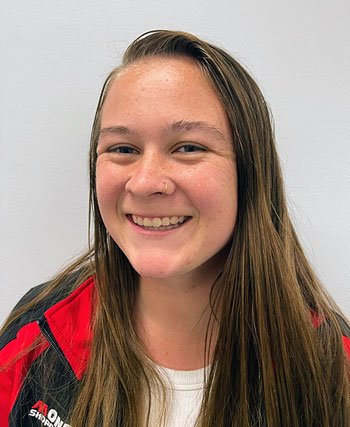In its 128th annual meeting on Wednesday, April 24, the WIAA member schools voted down the proposed Name, Image, Likeness (NIL) proposal 219-170. Although I see both pros and cons in the proposal, I ultimately support this vote.
The NCAA voted in NIL in June 2021, allowing college athletes to be paid for endorsements and activities of the like. At the high-school level, NIL is voted on state by state. Currently, there are over 30 states that have approved NIL, including neighboring states Iowa, Illinois and Minnesota.
Just because the proposal was voted down on Wednesday doesn’t mean the topic is going away, but I think there are points to consider before voting again.
I believe very few athletes in Southern Wisconsin would be impacted by this proposal, especially since the area is saturated with lower-division schools. For those fortunate enough to land an NIL deal, they would be exposed to rules that they may see later in college. They would learn how to handle money and brand themselves positively.
But what about those that don’t get deals?
Small town politics, especially those that are sports-related, are already a problem. I am cautioned on which athletes to choose for sports preview covers because my selection may cause internal conflict on the team. Despite the drawn-out thought process on who should make the cover, I still receive emails and calls wondering why so-and-so’s son or daughter didn’t make it. Even with regular coverage, I’m questioned why a specific athlete wasn’t featured in the paper. NIL would only increase these complaints.
To quote Dawn Staley, head women’s basketball coach of the 2024 national championship South Carolina team, “Problem is, y’all got league dreams with backyard work ethic. And your parents applaud it.”
Everyone wants the best for their son or daughter, I get it. But life isn’t fair, and not everyone would receive NIL deals. Plain and simple.
Introducing NIL deals would also take away from the premise of high school sports — education.
In an interview with Fox 6, WIAA Director Stephanie Hauser summed up high school sports perfectly: “It is called education-based athletics for a very specific reason. That is it. That is intentional because it is all about learning. It’s about learning the game. It’s about learning who you are as a person as you’re going through adolescence. It’s about learning how to be a great teammate, how to be a communicator, how to be a part of something bigger than yourself. …”
Even though NIL wasn’t even a topic of discussion when I was in high school from 2012-2016, I never once considered playing sports for anything other than the love of the game. While that was the main premise of my participation in sports, I also learned valuable life lessons along the way.
I ran cross country in middle school to stay in shape for basketball, not because I liked running. The sport instilled perseverance in me that, even though I wanted to stop running multiple times during a race, I kept going.
When I didn’t put in enough summer miles to participate in cross country in high school, I joined tennis with influence from friends. I had never played competitive tennis in my life up until that point, so I had to learn how to accept failure at the sport. I had to fight through the frustration and tears, which helped me earn Most Improved at the end of the year.
Sophomore year of basketball, with former Division I basketball player Ellie (Radke) Cianfrini as my coach, I learned about effort and to always give 100%. Everyone knew how much conditioning Ellie made her teams do, but if you worked hard in practice and gave it your all, she didn’t condition you hard. If she felt we were giving less than 100% or didn’t touch the baseline, we ran again. You bet that season I never missed a line and I gave my all, even if I felt like I was running on fumes.
Softball, though, taught me the most of all. As a pitcher and leadoff batter, I learned leadership through demonstration. I did the little things — picked up equipment after games and practices, asked for extra reps and took advice from coaches — because my teammates were watching.
If NIL is introduced to the high-school level, I fear those life lessons go away; athletes will strive for NIL deals and focus purely on their athletic performances.
NIL makes sense at the college level. Athletes are more mature at that point in their lives and they’ve developed a foundation of understanding of the game and themselves as people. High school athletes are still figuring themselves out.
Let’s consider these points the next time an NIL proposal is up for consideration to preserve the integrity of high school sports as we know them.
— Natalie Dillon is the sports editor for the Times. She can be reached at ndillon@themonroetimes.com.





